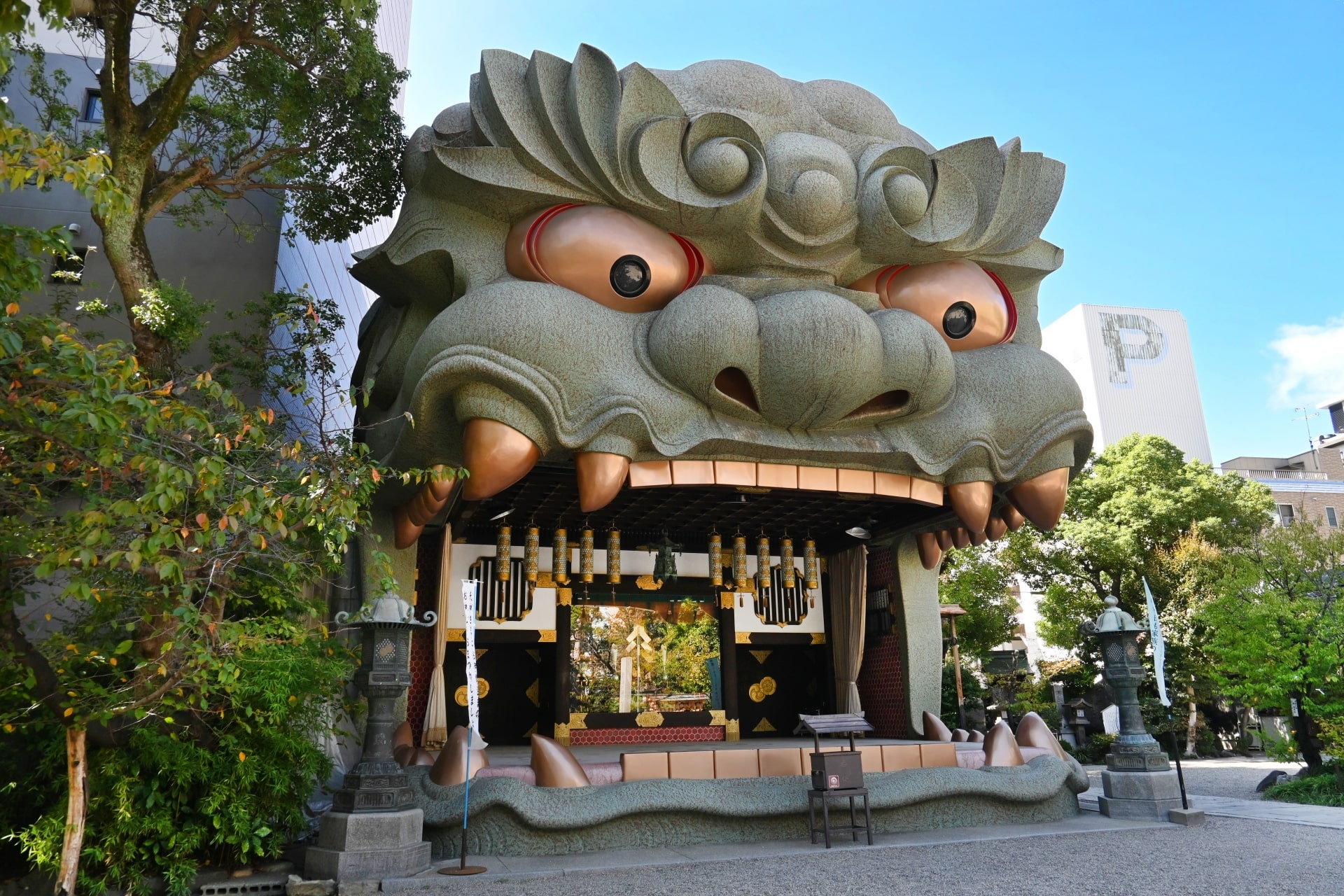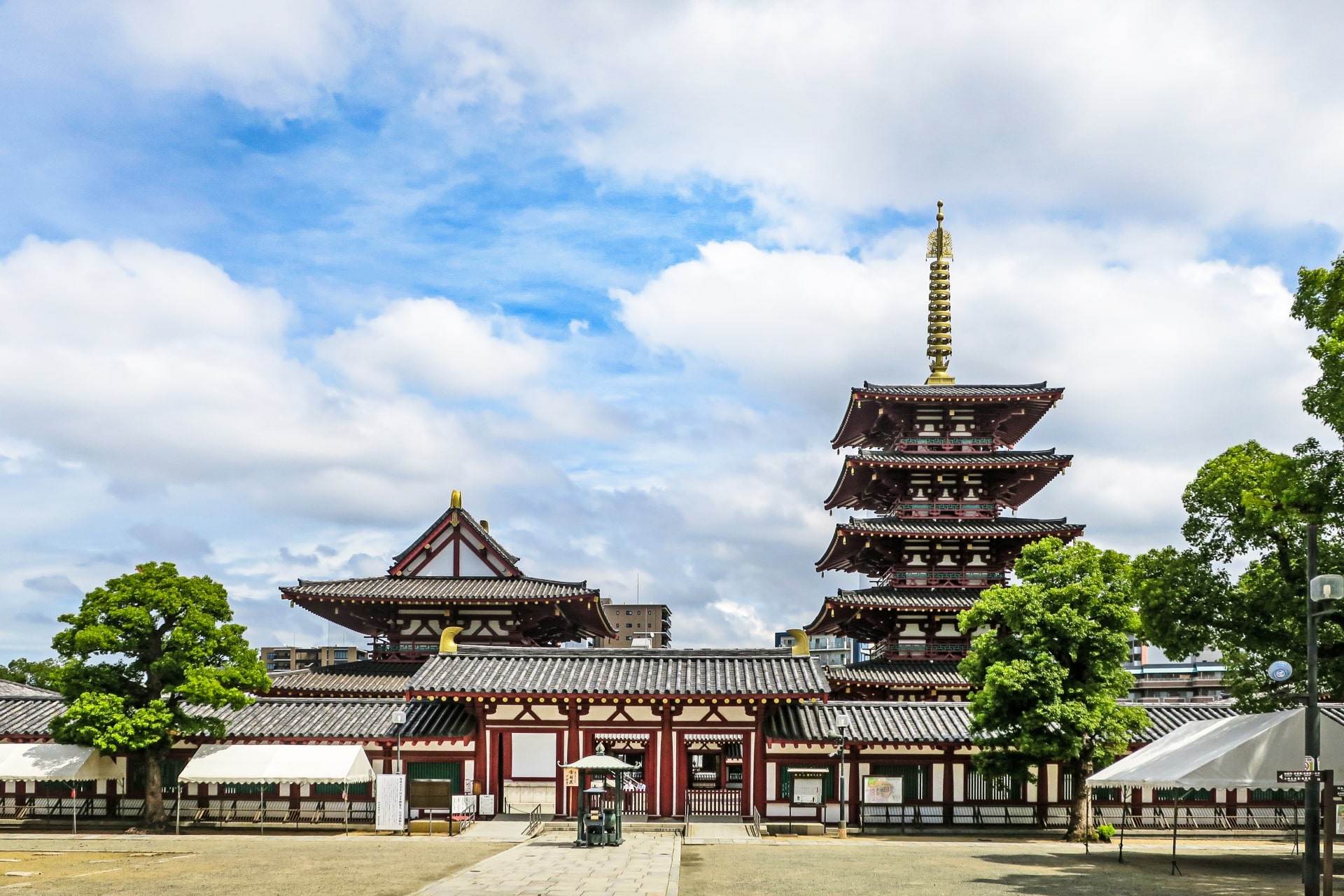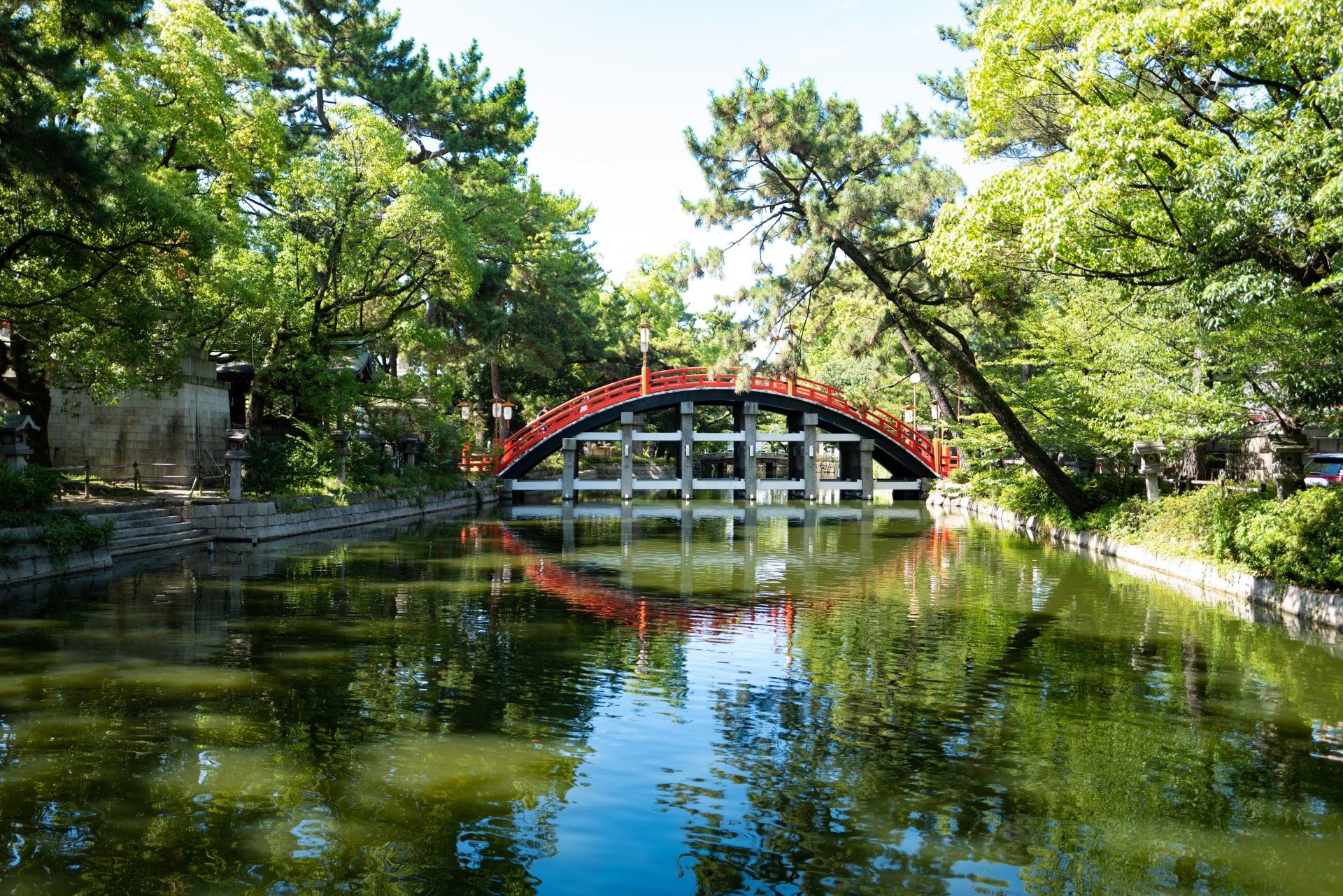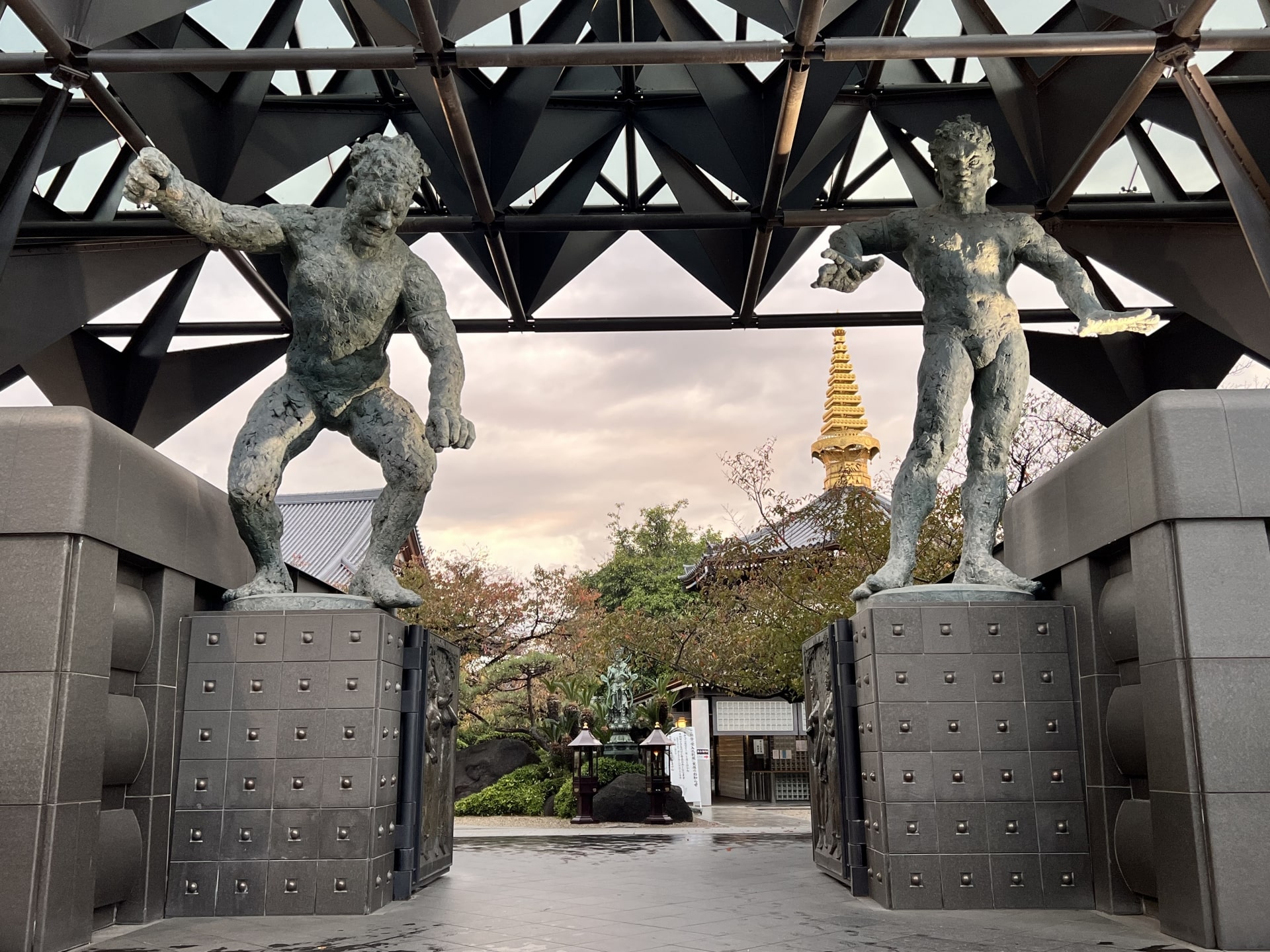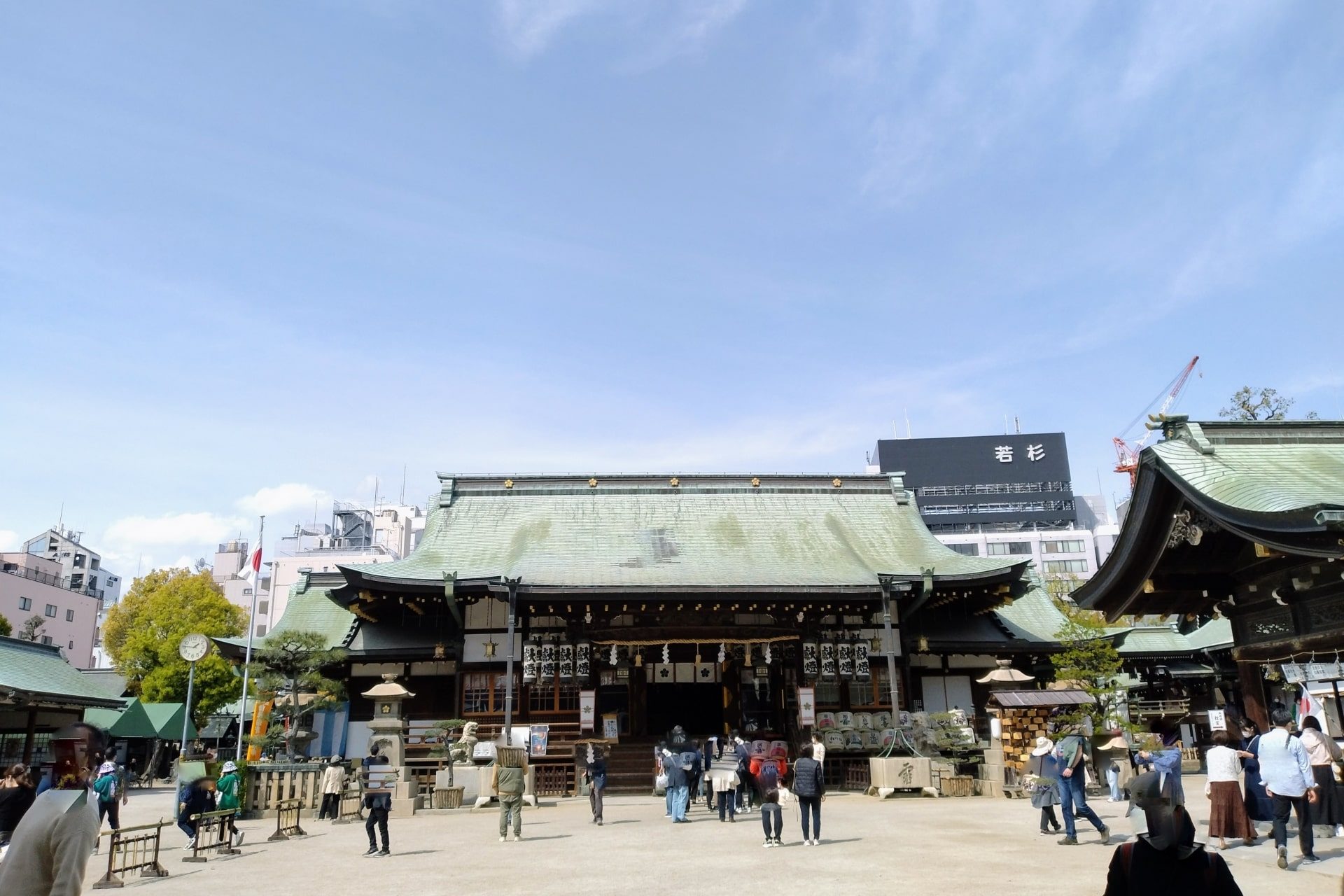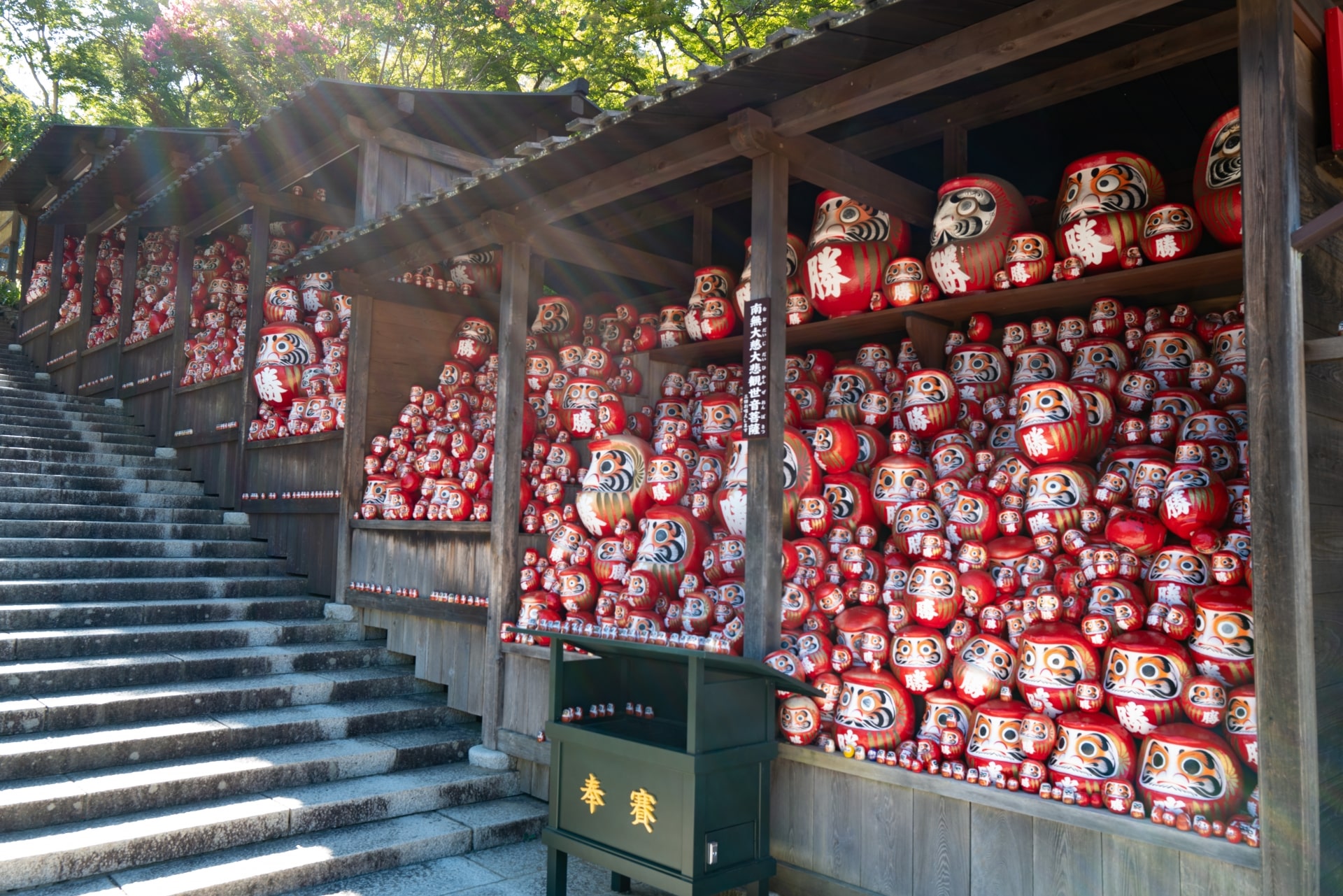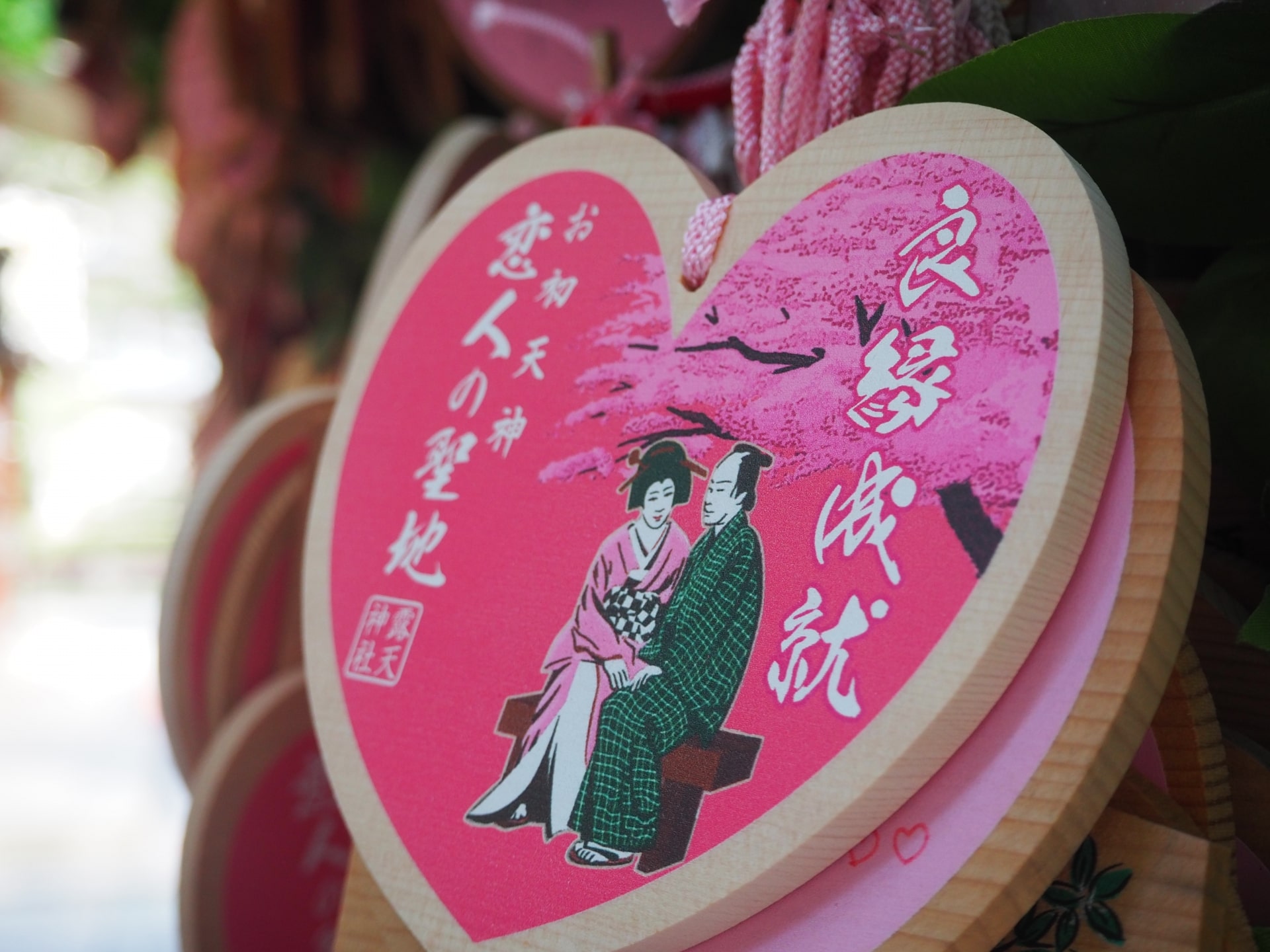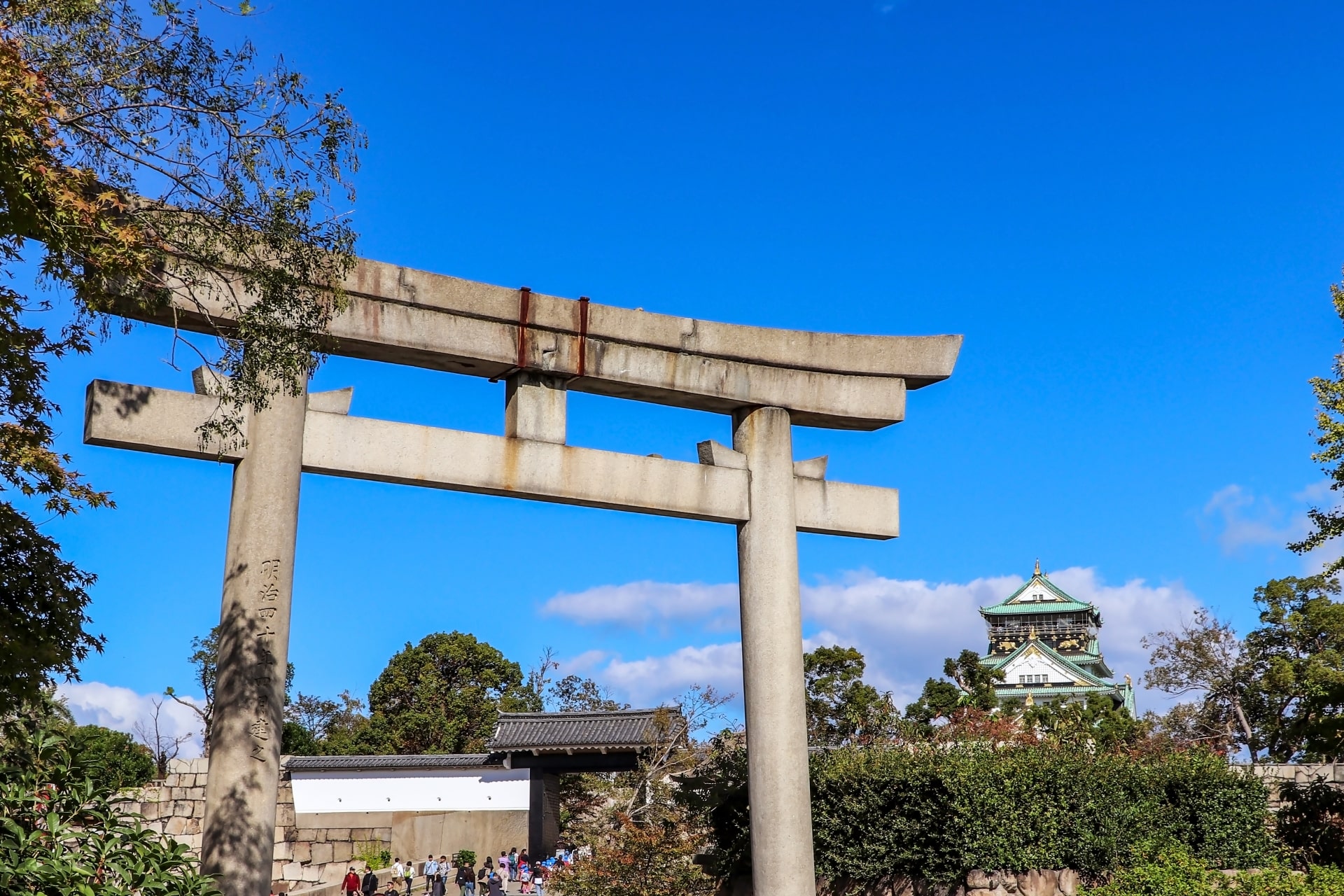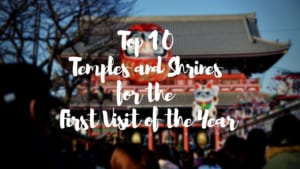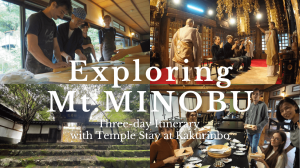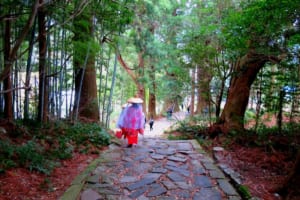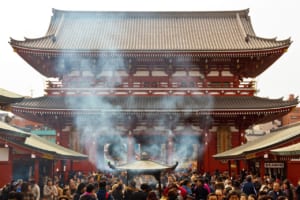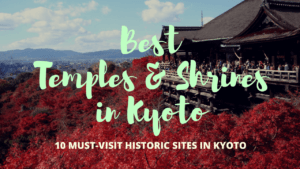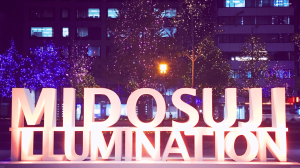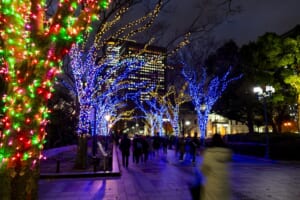Best Shrines and Temples in Osaka
Discover The Must-Visit Shrines and Temples in Osaka
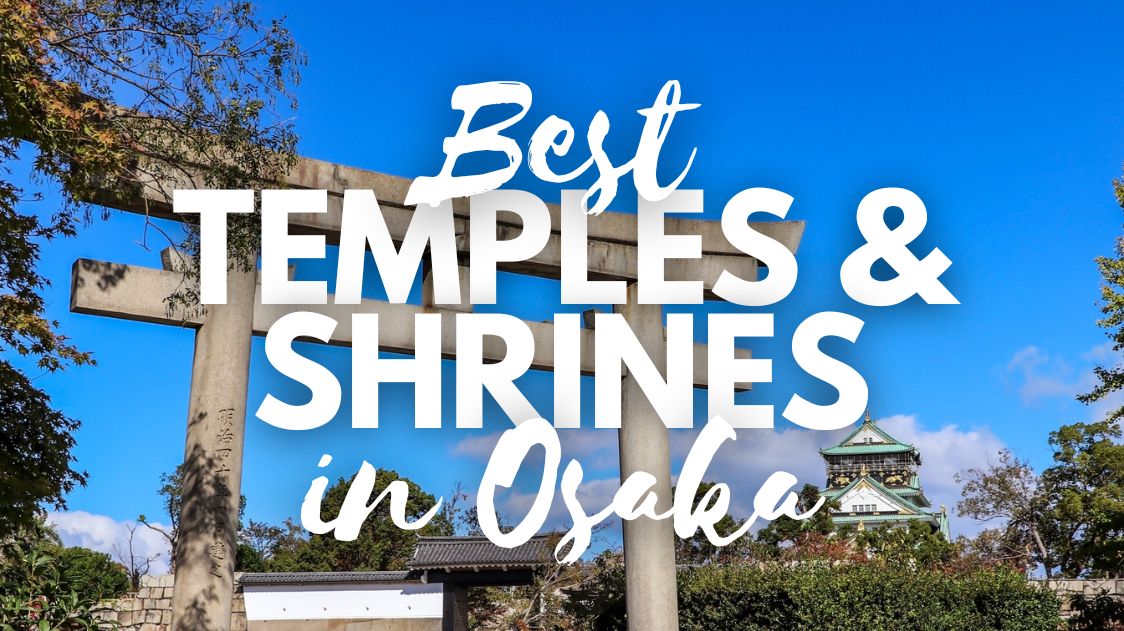
Osaka’s shrines and temples are one of the most important aspects of the city’s layered history and traditions. It’s in this vibrant hub where we see the contrasts between the city’s modern energy and its deeply rooted cultural practices. The city’s religious landmarks are a reflection of this dynamic, showcased through a wide variety of architectural styles.
These sacred spaces have shaped the character of Osaka over generations, each one with its own character, regardless of being large complexes hosting major festivals or smaller, lesser-known gems tucked into quiet corners and filled with local charm. So here we gather these Shinto shrines and Buddhist temples, as the most remarkable samples of the city’s cultural and spiritual heritage.
1. Namba Yasaka Shrine
Tucked away within Namba’s lively streets, Namba Yasaka Shrine (難波八阪神社) is impossible to miss, thanks to its iconic lion-head stage. This dramatic structure, with its large mouth and piercing eyes, serves as the shrine’s centerpiece and a unique backdrop for festivals and prayers. The shrine has a rich history tied to the area’s maritime and commercial past, with locals visiting to seek prosperity and protection.
Despite its central location, the grounds feel unexpectedly peaceful, allowing for a moment of reflection amid the city’s chaos. The lion head, believed to ward off evil and bring good luck, has made the shrine a favorite among locals and tourists, with visitors often takeing the opportunity to snap a photo with the striking structure. But it’s worth taking also a closer look at the smaller details, like the intricate carvings and historical plaques!
More info: Namba Yasaka Shrine: The Lion Head Shrine in Osaka
2. Shitennoji
As Japan’s oldest Buddhist temple, Shitennoji (四天王寺) is one of the cornerstones of the nation’s Buddhist heritage. Founded in 593 by Prince Shotoku, a figure pivotal in spreading Buddhism in Japan, the temple complex reflects over a millennium of faith and adaptation. Its architecture integrates traditional Buddhist elements with modern reconstructions, as the site has been rebuilt several times due to fire and war.
Here you can explore the central pagoda, tranquil gardens, and the Gokuraku-jodo Garden, which is modeled after the Buddhist paradise. The atmosphere here is contemplative, particularly during annual events like the Doya-Doya festival, where the temple grounds come alive with vibrant activity. Unlike many other religious sites, Shitennoji also hosts a bustling flea market on the 21st and 22nd of each month, offering everything from antiques to handmade crafts.
More info: Shitennoji Temple: Oldest Buddhist Temple in Japan
3. Sumiyoshi Taisha
A symbol of Osaka’s connection to the sea, Sumiyoshi Taisha (住吉大社) is one of the oldest Shinto shrines in Japan, dating back to the 3rd century. Its unique architecture, known as Sumiyoshi-zukuri, predates the influence of Chinese design, making it a rare example of purely Japanese shrine construction. The shrine is dedicated to the Sumiyoshi Sanjin, deities associated with safe sea travel and prosperity, and has been a spiritual beacon for seafarers throughout history.
The grounds are expansive, featuring four main halls painted in vivid vermilion and adorned with symbolic motifs. A standout feature is the arched, which connects the approach to the main shrine buildings and offers a picturesque view. The shrine is particularly popular during the New Year and Sumiyoshi Matsuri, drawing crowds eager to partake in the festivities and rituals. It’s a must-visit to understand Osaka’s historical ties to trade and the ocean.
More info: Sumiyoshi Taisha: One of Japan’s oldest Shinto Shrines
4. Isshinji
Isshinji (一心寺), located near the busy Tennoji district, is a spiritual site with a unique artistic legacy. Known as the “Temple of Buddha Statues Made of Ash,” it has a deeply moving tradition of creating Buddha statues from the cremated remains of devotees. This practice, which began in 1887, serves as a poignant reminder of the impermanence of life and the cycle of rebirth central to Buddhist teachings.
The temple’s modern architecture is an unusual mix of traditional and contemporary styles. Visitors can explore its tranquil grounds, which include an inviting garden and a striking main hall. The temple also hosts seasonal events and ceremonies, which often draw a mix of locals and visitors curious about its customs. Despite its somber origins, Isshinji exudes a calm and reflective atmosphere.
 Access Access |
10-min walk from Tennōji Station, or Ebisucho Station, or Shitennōji-mae Yūhigaoka Station |
|---|---|
 Official Website Official Website |
http://www.isshinji.or.jp/ |
5. Osaka Tenmangu
Osaka Tenmangu (大阪天満宮), a revered shrine for Tenjin worship, is best known for its ties to academia and its vibrant festivals. Established in the 10th century, the shrine is dedicated to Sugawara no Michizane, a scholar and poet deified as the patron of learning and the arts. It holds special significance for students praying for success in their studies and exams.
The shrine is also the heart of the Tenjin Matsuri, one of Japan’s top three festivals, celebrated with an awe-inspiring river procession and spectacular fireworks. While the festival brings the shrine to life with energy and excitement, the quieter moments here are just as rewarding. The grounds feature a charming combination of traditional structures and stone monuments, with an air of peaceful dignity.
 Address Address |
4-min walk from Ōsakatemmangū Station |
|---|---|
 Official Website Official Website |
https://osakatemmangu.or.jp/ |
6. Katsuoji
Perched in the northern hills of Osaka, Katsuoji (勝尾寺) is a Buddhist Temple often considered as a hidden gem and famed for its daruma dolls and tranquil natural surroundings. Known as the “Temple of Victory,” it attracts visitors who seek luck in achieving personal goals, symbolized by the temple’s countless daruma figurines. These dolls, painted with bright red hues and filled with wishes, are placed by devotees hoping for success.
The temple grounds are expansive, featuring beautifully landscaped gardens, koi-filled ponds, and picturesque walking paths that change dramatically with the seasons. In autumn, the fiery red leaves create a stunning backdrop, making it one of the best local spots for autumn leaves. And thanks to its location, away from the city center, it’s a perfect place for a small natural escape.
 Access Access |
15-min drive from Saito-Nishi Station |
|---|---|
 Official Website Official Website |
http://www.katsuo-ji-temple.or.jp/ |
7. Tsuyuten Shrine (Ohatsu Tenjin)
Tsuyuten Shrine (露天神社), affectionately called Ohatsu Tenjin (お初天神), is a compact yet culturally significant site in Osaka’s Umeda district. Its fame stems from its association with the tragic love story of Ohatsu and Tokubei, a tale immortalized in the 18th-century bunraku play, Sonezaki Shinju. The shrine has since become a symbol of romantic devotion, attracting couples who come to pray for a happy relationship or leave ema (wooden plaques) with love-themed wishes.
Beyond its romantic reputation, the shrine’s modest grounds have a peaceful atmosphere that contrasts with the busy urban surroundings. Despite its size, Ohatsu Tenjin serves as an important gathering point for seasonal festivals and local events, including lively markets that are occasionally set up near the shrine.
 Access Access |
3-min walk from Higashi-Umeda Station |
|---|---|
 Official Website Official Website |
https://www.tuyutenjin.com/ |
8. Hozenji
Hidden within the streets of Osaka’s Namba district, Hozenji (天龍山 法善寺) is a peaceful Buddhist Temple with a touch of mystique. The temple is best known for its moss-covered statue of Fudo Myo-o, a Buddhist deity associated with protection and discipline. Devotees pour water over the statue during prayers, creating the lush moss that now envelops it, a visual representation of years of collective faith.
The temple’s compact grounds exude an old-world charm, further enhanced by the surrounding cobblestone streets of Hozenji Yokocho. This narrow alleyway, lined with traditional restaurants and shops, adds to the temple’s appeal and transports visitors to a different era. While small in scale, Hozenji Temple is a perfect spot for quiet reflection after exploring the lively Dotonbori area nearby.
9. Toyokuni Shrine
Dedicated to Toyotomi Hideyoshi, Toyokuni Shrine (豊國神社) is a tribute to Osaka’s historical legacy. Located near Osaka Castle, the shrine is often overlooked in favor of its more famous and remarkable neighbor. However, the shrine honors Hideyoshi’s achievements and his monumental influence on Japanese history, as the feudal lord who unified Japan, so the shrine is deserving of at least a moment of appreciation.
Its understated architecture reflects a sense of dignity, with the bronze statue of Hideyoshi standing proudly on the grounds as a focal point, so many come here to pray for prosperity and success, echoing Hideyoshi’s ambitious spirit. Seasonal festivals and events occasionally breathe life into the otherwise tranquil grounds.
 Access Access |
15-min walk from Morinomiya Station |
|---|---|
 Official Website Official Website |
http://www.osaka-hokokujinja.org/ |
10. Senkoji
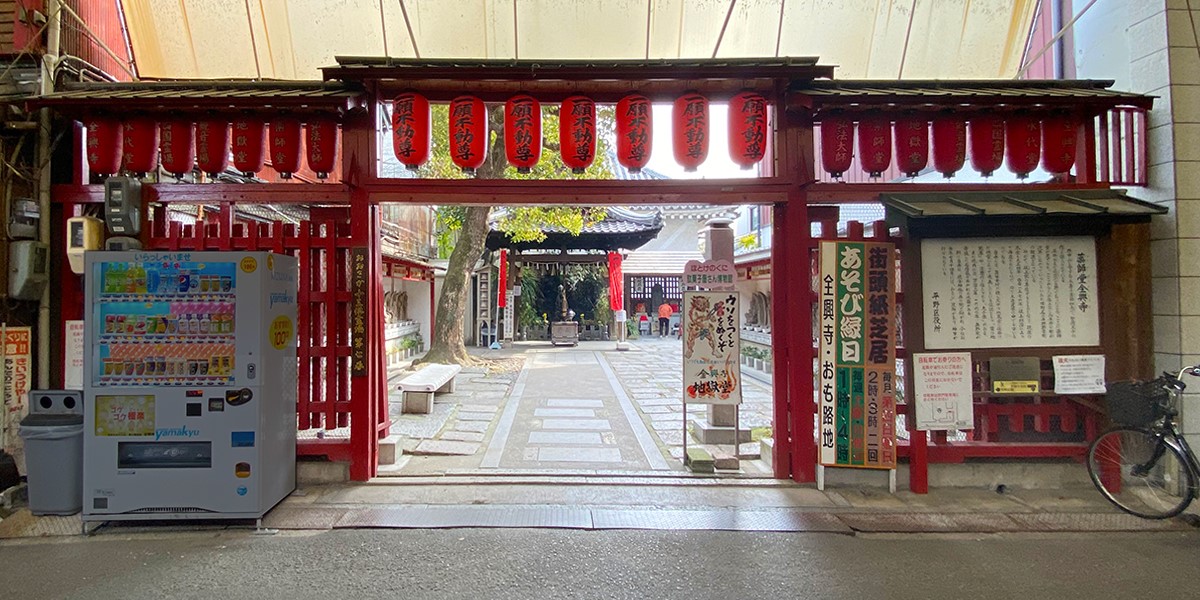
Senkoji (全興寺), a Buddhist Temple located in Hirano Ward, is a quirky yet introspective take on Buddhist philosophy. Unlike most temples, it embraces an interactive approach to spirituality, featuring exhibits that invite visitors to reflect on life and death in a playful yet thought-provoking way. One of the temple’s most popular attractions is the small-scale replica of the gate to the afterlife, complete with visual depictions of heaven and hell drawn from Buddhist teachings.
Another highlight is its display of traditional daruma dolls, a good opportunity to learn more about the art and symbolism behind these iconic figures. Senkoji also maintains a tranquil garden where visitors can enjoy a quiet moment of reflection. It’s a unique destination that mixes humor, art, and spirituality, so it’s a must for travelers seeking a temple experience that goes beyond the ordinary.
▽Subscribe to our free news magazine!▽
For more information about cultural landmarks and traveling in Japan, check these articles below, too!
▽Related Articles▽
▼Editor’s Picks▼
Written by
Photographer, journalist, and avid urban cyclist, making sense of Japan since 2017. I was born in Caracas and lived for 14 years in Barcelona before moving to Tokyo. Currently working towards my goal of visiting every prefecture in Japan, I hope to share with readers the everlasting joy of discovery and the neverending urge to keep exploring.





